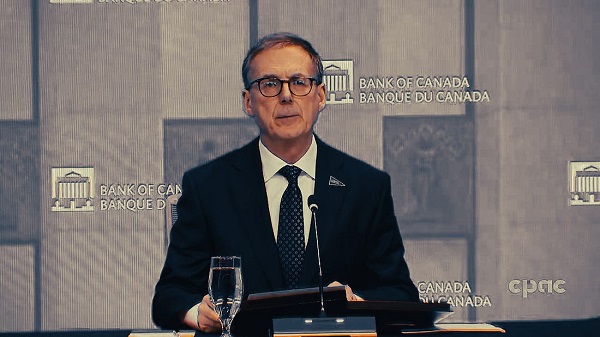Opinion
Making Your Opinion Known: To Petition or Not to Petition?

We all see the petition campaigns on Facebook.

“Sue Smith” has just signed to support a Ban Plastic Single Use Straw Campaign..She wants you to help. Click here to let the Canadian Government know you want them banned.
Online petitions do work, they gather thousands and sometimes millions of signatures from well meaning people who want to see the right thing done for the right reasons. However, over the last week I have noticed something that demands a closer look.
Change.org, CitizenGo,org, GoPetition, SumOfUS and iPetition are just a few of the companies whose primary goal is to allow citizens to make their concerns known around the world. To be fair, there are many great causes that have been advanced by these platforms for democracy, but as noted, they are not all created equal.
We should look for a couple of things when we consider signing on the digital line.
Firstly, what happens to our well-intentioned electronic signature?
Your signature and information is used by the petitioner, but after that it may be sold as part of an electronic mailing list to target you with unsolicited offers and other related petitions. You may get spam related to retail, political and social campaigns and newsletters.
Secondly, what is the petition for and what other causes do they espouse?
I will use the SumOfUs example.
I am a Canadian and SumOfUs has had some good campaigns, but this week I was caught aback by back to back requests.
The first one is aimed at the TD Bank and states the following:
MASSIVE NEWS — thanks to your pressure over the last two years, TD Bank just announced it is pulling the plug on fossil fuels and going net-zero by 2050.
This win is a testament to the strength of our people powered movement to combat climate change.
In 2019, TD executives underestimated the power of our movement and relayed to me that a plan to defund fossil fuels just wasn’t possible before 2050.
But thanks to all of the hard work of SumOfUs members like you over the past two years, TD executives JUST announced a plan to move away from funding fossil fuels.
I think this is an atrocious announcement and signals to me that the TD Bank has bought in to Agenda 21 and 2030/2050 from the UN of which Climate Change AND Net Zero are tenets.
Why would I, as a citizen of Alberta who benefits from the Oil Industry, continue to support this group?
Another one that caught my attention was aimed at Big Tech and their censorship and its influence on the Republican view on the election…In specific, censorship of
Joe Biden has won the US Presidency — but not on social media.
Tech giants like Facebook and YouTube have created toxic algorithms that push people to extreme content, littered with hate speech and lies. It’s one of the ways groups spreading election disinformation are able to grow by the tens of thousands in a matter of hours.
But massive pressure forced the tech giants to take new measures to slow the spread of disinformation — and evidence suggests they worked. This shows us the platforms *can* act if we force them to.
So let’s keep up the pressure on the tech platforms now more than ever, to stop disinformation and detox their algorithms. Join the call and share this widely!
Tell Facebook, YouTube, and Twitter: stop the spread of disinformation — detox your algorithms!
But our community has been relentless with our pressure on the platforms, and we’re finally seeing them act — with Facebook reducing the reach of pages and groups spreading election disinformation, and Twitter labeling Trump’s disinformation over a dozen times and counting.
Thirdly, if for instance, SumOfUs promotes such petitions, it should not be too difficult to ascertain who their masters are. By supporting such corporations, we are supporting the Soros and Gates of this world and their agendas.
Fourthly, every petition company uses two strategies to generate income and to extend their influence. They ask you to share on social media that you support their effort and they ask for a donation to help them meet targets. Share and you may help, but more likely you have just given them one more signee and funder to target.
Fifthly, do online petitions really help?
If we believe the emails, they do indeed often help a special interest group in their lobby or get an issue noticed by a social media audience. There is also the claim that an online petition got Trump banned from Britain as well. However, getting a specific message out to a large corporation is difficult and this is just one tool. Often these are just phishing expeditions but targeted audiences do impact decisions.
Sixthly, are the causes legitimate? The death of George Floyd was unfortunate but the petition that followed changed history. Most people are not aware that many other coloured men died that day from police activity as well. The violence that followed in the days afterward may have been avoided by the attention drawn to the issue by the petition.
Lastly, if you are truly concerned about an issue or special interest group, by all means sign the petition, then send real letters, phone, send emails, demonstrate or ask hard questions. Often companies do not understand the impact of their policies and can change. Make your voice heard.

Photo by Jeff Stokoe
Locally, in my protection of history, I had stated a petition to protect and save Red Deers oldest building (1899) and over the course of a month had garnered close to 400 signatures. During the process, others helped by manning tables and getting signatures. In the end, we did not save the building, but did manage to change official policy and make international news. You never know what your actions will do if you empower people and value their opinions.
Petition organizer tries to save historic Red Deer hotel | CBC News
The silent man loses every argument and those who rustle the bushes have a chance of changing the landscape one leaf at a time.
Get involved but be cautious.
Business
Canada’s economic performance cratered after Ottawa pivoted to the ‘green’ economy

From the Fraser Institute
By Jason Clemens and Jake Fuss
There are ostensibly two approaches to economic growth from a government policy perspective. The first is to create the best environment possible for entrepreneurs, business owners and investors by ensuring effective government that only does what’s needed, maintains competitive taxes and reasonable regulations. It doesn’t try to pick winners and losers but rather introduces policies to create a positive environment for all businesses to succeed.
The alternative is for the government to take an active role in picking winners and losers through taxes, spending and regulations. The idea here is that a government can promote certain companies and industries (as part of a larger “industrial policy”) better than allowing the market—that is, individual entrepreneurs, businesses and investors—to make those decisions.
It’s never purely one or the other but governments tend to generally favour one approach. The Trudeau era represented a marked break from the consensus that existed for more than two decades prior. Trudeau’s Ottawa introduced a series of tax measures, spending initiatives and regulations to actively constrain the traditional energy sector while promoting what the government termed the “green” economy.
The scope and cost of the policies introduced to actively pick winners and losers is hard to imagine given its breadth. Direct spending on the “green” economy by the federal government increased from $600 million the year before Trudeau took office (2014/15) to $23.0 billion last year (2024/25).
Ottawa introduced regulations to make it harder to build traditional energy projects (Bill C-69), banned tankers carrying Canadian oil from the northwest coast of British Columbia (Bill C-48), proposed an emissions cap on the oil and gas sector, cancelled pipeline developments, mandated almost all new vehicles sold in Canada to be zero-emission by 2035, imposed new homebuilding regulations for energy efficiency, changed fuel standards, and the list goes on and on.
Despite the mountain of federal spending and regulations, which were augmented by additional spending and regulations by various provincial governments, the Canadian economy has not been transformed over the last decade, but we have suffered marked economic costs.
Consider the share of the total economy in 2014 linked with the “green” sector, a term used by Statistics Canada in its measurement of economic output, was 3.1 per cent. In 2023, the green economy represented 3.6 per cent of the Canadian economy, not even a full one-percentage point increase despite the spending and regulating.
And Ottawa’s initiatives did not deliver the green jobs promised. From 2014 to 2023, only 68,000 jobs were created in the entire green sector, and the sector now represents less than 2 per cent of total employment.
Canada’s economic performance cratered in line with this new approach to economic growth. Simply put, rather than delivering the promised prosperity, it delivered economic stagnation. Consider that Canadian living standards, as measured by per-person GDP, were lower as of the second quarter of 2025 compared to six years ago. In other words, we’re poorer today than we were six years ago. In contrast, U.S. per-person GDP grew by 11.0 per cent during the same period.
Median wages (midpoint where half of individuals earn more, and half earn less) in every Canadian province are now lower than comparable median wages in every U.S. state. Read that again—our richest provinces now have lower median wages than the poorest U.S. states.
A significant part of the explanation for Canada’s poor performance is the collapse of private business investment. Simply put, businesses didn’t invest much in Canada, particularly when compared to the United States, and this was all pre-Trump tariffs. Canada’s fundamentals and the general business environment were simply not conducive to private-sector investment.
These results stand in stark contrast to the prosperity enjoyed by Canadians during the Chrétien to Harper years when the focus wasn’t on Ottawa picking winners and losers but rather trying to establish the most competitive environment possible to attract and retain entrepreneurs, businesses, investors and high-skilled professionals. The policies that dominated this period are the antithesis of those in place now: balanced budgets, smaller but more effective government spending, lower and competitive taxes, and smart regulations.
As the Carney government prepares to present its first budget to the Canadian people, many questions remain about whether there will be a genuine break from the policies of the Trudeau government or whether it will simply be the same old same old but dressed up in new language and fancy terms. History clearly tells us that when governments try to pick winners and losers, the strategy doesn’t lead to prosperity but rather stagnation. Let’s all hope our new prime minister knows his history and has learned its lessons.
Business
Canadians paid $90 billion in government debt interest in 2024/25

From the Fraser Institute
By Jake Fuss, Tegan Hill and William Dunstan
Next week, the Carney government will table its long-awaited first budget. Earlier this year, Prime Minister Mark Carney launched a federal spending review to find $25 billion in savings by 2028. Even if the government meets this goal, it won’t be enough to eliminate the federal deficit—projected to reach as high as $92.2 billion in 2025/26—and start paying down debt. That means a substantial amount of taxpayer dollars will continue to flow towards federal debt interest payments, rather than programs and services or tax relief for Canadians.
When a government spends more than it raises in revenue and runs a budget deficit, it accumulates debt. As of 2024/25, the federal and provincial governments will have accumulated a total projected $2.3 trillion in combined net debt (total debt minus financial assets).
Of course, like households, governments must pay interest on their debt. According to our recent study, the provinces and federal government expect to spend a combined $92.5 billion on debt interest payments in 2024/25.
And like any government spending, taxpayers fund these debt interest payments. The difference is that instead of funding important programs, such as health care, these taxpayer dollars will finance government debt. This is the cost of deficit spending.
How much do Canadians pay each year in government debt interest costs? On a per-person basis, combined provincial and federal debt interest costs in 2024/25 are expected to range from $1,937 in Alberta to $3,432 in Newfoundland and Labrador. These figures represent provincial debt interest costs, plus the federal portion allocated to each province based on a five-year average (2020-2024) of their share of Canada’s population.
For perspective, it’s helpful to compare debt interest payments to other budget items. For instance, the federal government estimates that in 2024/25 it will spend more on debt interest costs ($53.8 billion) than on child-care benefits ($35.1 billion) or the Canada Health Transfer ($52.1 billion), which supports provincial health-care systems.
Provincial governments too spend more money on interest payments than on large programs. For example, in 2024/25, Ontario expects to spend more on debt interest payments ($15.2 billion) than on post-secondary education ($14.2 billion). That same year, British Columbia expects to spend more on debt interest payments ($4.4 billion) than on child welfare ($4.3 billion).
Unlike other forms of spending, governments cannot simply decide to spend less on debt interest payments in a given year. To lower their debt interest payments, governments must rein in spending and eliminate deficits so they can start to pay down debt.
Unfortunately, most governments in Canada are doing the opposite. All but one province (Saskatchewan) plans to run a deficit in 2025/26 while the federal deficit could exceed $90 billion.
To stop racking up debt, governments must balance their budgets. By spending less today, governments can ensure that a larger share of tax dollars go towards programs or tax relief to benefit Canadians rather than simply financing government debt.
-

 Business2 days ago
Business2 days agoCanada heading into economic turbulence: The USMCA is finished and Canadian elbows may have started the real fight
-

 National2 days ago
National2 days agoCanadian MPs order ethics investigation into Mark Carney’s corporate interests
-

 National2 days ago
National2 days agoCanada’s NDP is now calling women ‘non-males’
-

 Banks2 days ago
Banks2 days agoBank of Canada Cuts Rates to 2.25%, Warns of Structural Economic Damage
-

 Business2 days ago
Business2 days agoFord’s Liquor War Trades Economic Freedom For Political Theatre
-

 Health2 days ago
Health2 days agoLeslyn Lewis urges Canadians to fight WHO pandemic treaty before it’s legally binding
-

 MxM News2 days ago
MxM News2 days agoTrump ‘Grateful’ For Bill Gates Pivot, Declares Victory Over ‘Climate Change Hoax’
-

 Alberta2 days ago
Alberta2 days agoNobel Prize nods to Alberta innovation in carbon capture












